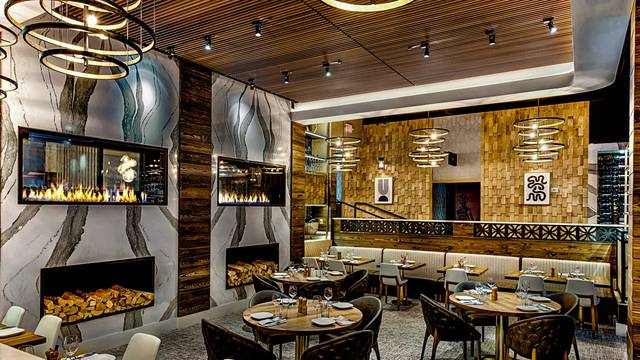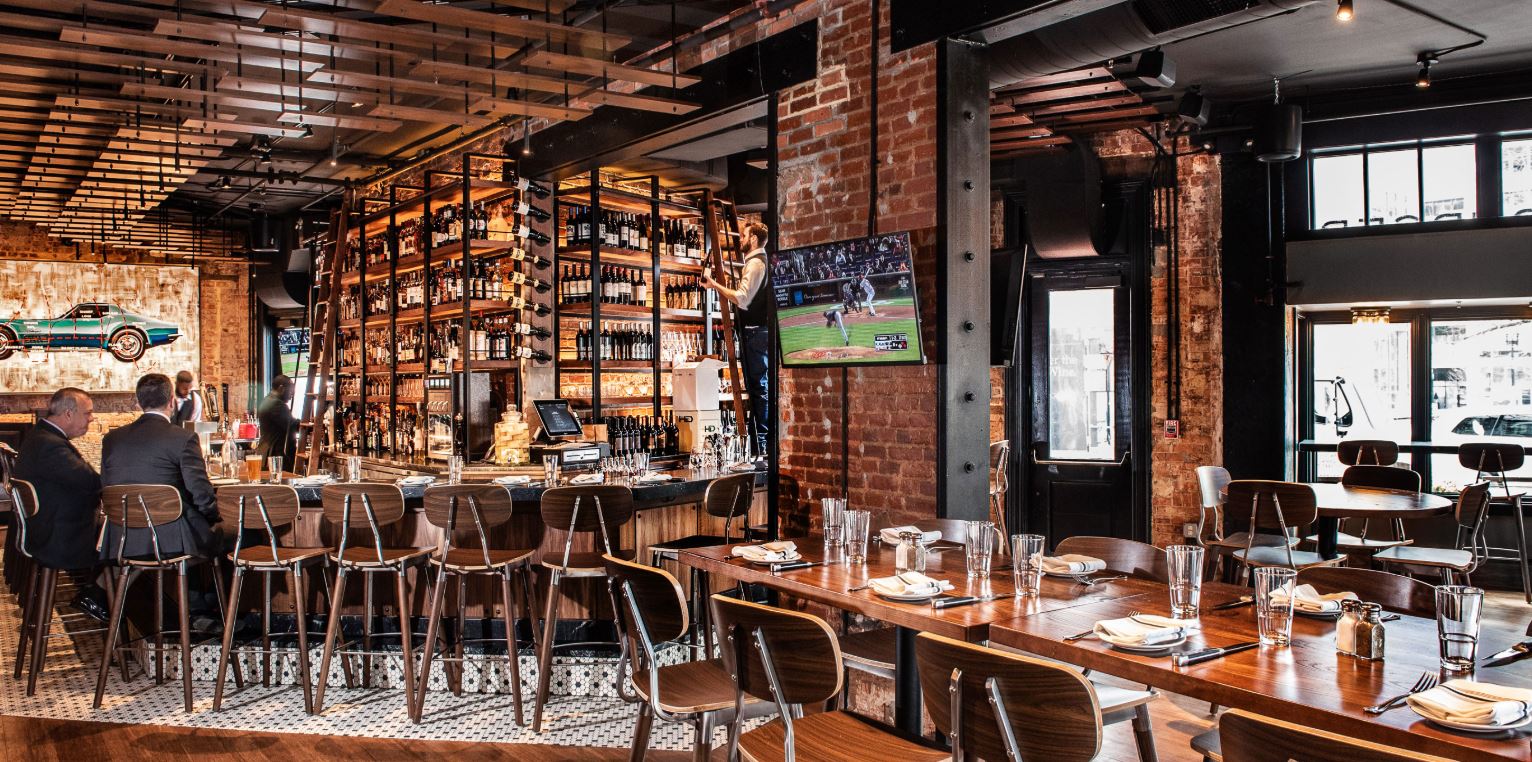Savor Authentic Eastern Food With a Pan-Asian Twist for a Culinary Journey
Starting a culinary trip through genuine Eastern cuisine, boosted with a Pan-Asian twist, supplies an unique opportunity to discover the rich tapestry of flavors that specify the area's diverse cooking traditions. This experience invites you to savor the splendid equilibrium of tastes-- pleasant, salted, spicy, and sour-- balanced by aromatic natural herbs and flavors. Imagine the innovative blend of Thai curry and ramen or the unanticipated joy of sushi burritos. As you ponder these enticing meals, think about the social stories and historical influences that form them, each bite using a tale waiting to be found.

Exploring Pan-Asian Flavors
In the realm of international gastronomy, Pan-Asian food stands out for its amazing variety and the unified interaction of tastes from different Asian societies. This cooking method commemorates the abundant customs and one-of-a-kind active ingredients found throughout the continent, creating a tapestry of preferences that is both rewarding and fascinating. Key to Pan-Asian cuisine is its ability to stabilize different flavors-- pleasant, salty, spicy, and sour-- while highlighting the freshness and high quality of each active ingredient.
From the umami-rich soy sauce of Japan to the fiery chili peppers of Thailand, Pan-Asian cuisine offers a comprehensive scheme of flavors. These components are commonly integrated in innovative methods, improving recipes with layers of intricacy. As an example, the usage of great smelling natural herbs such as lemongrass and cilantro, common in Vietnamese and Thai food, adds a rejuvenating illumination to dishes, while the incorporation of coconut milk provides a luscious, abundant appearance.
The focus on fresh produce and aromatic seasonings ensures that each dish is not only a feast for the taste yet additionally for the senses. Pan-Asian cuisine invites restaurants to embark on a culinary journey, exploring the huge and varied landscapes of Asian gastronomy with every bite.
Blend Dishes to Try
While Pan-Asian cuisine is celebrated for its conventional tastes, the contemporary culinary landscape is significantly embracing fusion recipes that blend these classic components with impacts from other regions. This innovative method not only honors the rich heritage of Eastern cookeries however likewise introduces novel preference experiences that interest contemporary palates.
A prime example of such a combination dish is the Korean-Mexican taco, where marinated bulgogi beef is covered in a warm tortilla, covered with kimchi and a hot gochujang-infused salsa. This mix weds the bold, tasty tastes of Korea with the lively, fresh elements of Mexican food. Likewise, sushi burritos have actually obtained popularity, joining together the delicate creativity of Japanese sushi with the passionate, hand-held benefit of a burrito, typically including combination components like tempura shrimp and avocado with a drizzle of wasabi mayo.
An additional notable recipe is Thai curry ramen, which instills the creamy, aromatic spices of Thai curry into the calming broth of traditional Japanese ramen, creating an unified blend that tantalizes the senses. These combination dishes extend beyond simple uniqueness; they stand for a cooking dialogue between cultures, encouraging exploration and advancement on the planet of Pan-Asian cuisine.
Vital Active Ingredients and Flavors
To genuinely appreciate Pan-Asian food, one should comprehend the necessary ingredients and seasonings that develop its structure. This varied cooking design attracts from an abundant tapestry of Eastern practices, utilizing an unified mix of flavors and appearances. Secret active ingredients include soy sauce, fish sauce, and oyster sauce, which present a full-flavored umami depth important to Asian recipes. Corresponding to these are rice vinegar and mirin, providing a delicate level of acidity and sweet taste.
Fragrant components are pivotal, with ginger, garlic, and lemongrass being ubiquitous throughout various Pan-Asian recipes. These components give a fragrant base that boosts the intricacy of tastes. Seasonings such as star anise, cardamom, and cinnamon present warmth and character, echoing impacts from regions like China and India.

Food Preparation Methods and Tips
Grasping the art of Pan-Asian food calls for experience with its distinctive cooking strategies, each adding to the vibrant tapestry of flavors this culinary tradition is commemorated for. Central to these techniques is the stir-fry, a rapid food preparation technique that preserves the nutritional integrity and vivid shades of components. Using a wok, the stir-fry approach permits even warmth distribution, essential for attaining the characteristic appearance and taste balance of Pan-Asian dishes.
An additional basic strategy is steaming, specifically widespread in Chinese food. This mild method maintains the all-natural tastes and nutrients of components, making it excellent for seafood and vegetables. Dumplings, a precious staple, frequently profit from steaming, resulting in soft, delicious textures.
Cooking, also integral, presents great smoky midsts to recipes such as Korean bulgogi or Japanese yakitori (best asian restaurant Islamabad). This technique usually includes seasoning active ingredients, allowing flavors to pass through deeply before cooking over an open fire or warm plate
Last but not least, grasping the art of stabilizing flavors-- sweet, sour, salted, bitter, and umami-- is crucial. Effectively layering these aspects can elevate a meal from normal to phenomenal, supplying a complicated and pleasing culinary experience that symbolizes the essence of Pan-Asian food.
Eating Experiences Worldwide
Across the world, Pan-Asian cuisine uses an unequaled eating experience, commemorated for its rich tapestry of tastes and dynamic discussions. This cooking phenomenon has transcended cultural boundaries, capturing the hearts and read this post here tastes of food lovers worldwide. In multicultural cities like New York, London, and Sydney, Pan-Asian restaurants work as melting pots where cooking customs from Thailand, Japan, China, and beyond converge, providing restaurants with an eclectic mix of dishes that highlight the region's variety.
The global appeal of Pan-Asian food depends on its capability to supply both credibility and innovation. Cooks skillfully marry conventional components such as lemongrass, soy sauce, and miso with contemporary methods, causing dishes this link that are both refreshingly brand-new and acquainted. This combination enables diners to start a culinary journey that appreciates heritage while accepting modernity.
In addition, eating experiences are boosted via thoughtfully designed atmospheres that reflect the values of Pan-Asian visual appeals. From minimal Japanese-inspired insides to vibrant Thai-themed areas, each restaurant offers a distinct setting that enhances the culinary offerings. Therefore, patrons are not just eating a meal but partaking in a cultural experience, making Pan-Asian eating a genuinely global phenomenon.
Verdict
The expedition of Pan-Asian cuisine uses an extensive understanding of the intricate interaction of flavors and cooking practices across Asia. By welcoming blend meals such as Thai curry ramen and sushi burritos, the cooking trip not just highlights the adaptability of typical active ingredients but additionally showcases ingenious modern-day strategies. This gastronomic journey, improved by cooking methods and vital spices, offers a distinct possibility to value the multiculturalism and culinary creativity that specify Pan-Asian food on a global range.
Beginning on a cooking journey via authentic Oriental cuisine, boosted with a Pan-Asian twist, supplies an unique chance to explore the abundant tapestry of tastes that specify the area's varied cooking customs.In the realm of global gastronomy, Pan-Asian cuisine stands out for its impressive variety and the harmonious interaction my link of tastes from numerous Eastern cultures. Secret to Pan-Asian food is its capability to balance contrasting flavors-- pleasant, salted, spicy, and sour-- while highlighting the freshness and top quality of each ingredient.
